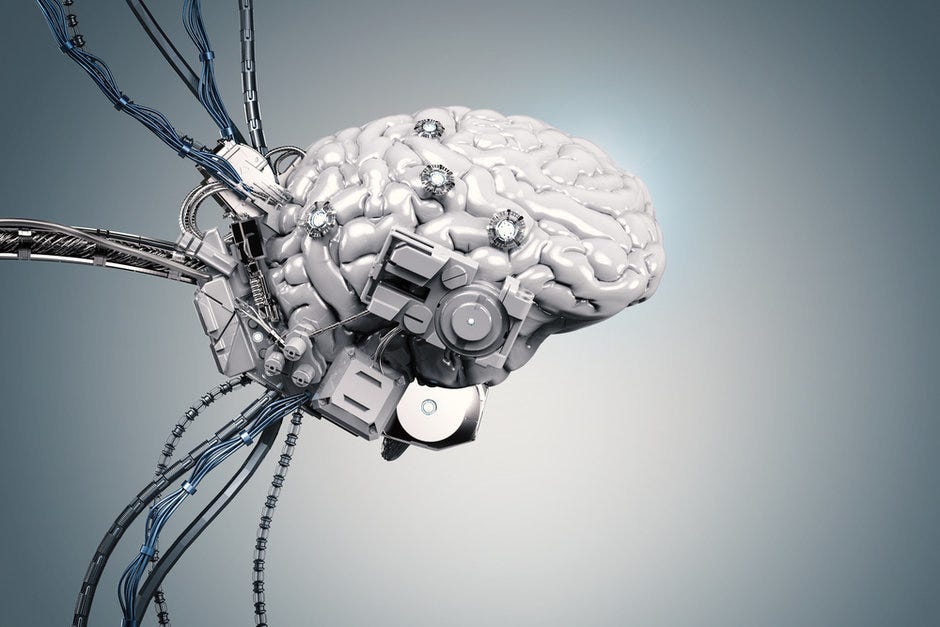What is Brain-machine interface and how does it work?
In recent years, the field of neuroprosthetics has advanced greatly. Neuroprosthetic devices use Brain-Machine Interface (BMI), devices which translate signals from the brain to prosthetic limbs. These devices allow an amputee or a patient who has suffered a spinal cord injury to have prosthetic limbs which closely mimic the action of a natural limb. (1)
When a patient has a missing limb, the brain still thinks that the limb is there, and still transmits signals to the missing limb. A BMI picks up these signals using sensors, either electrodes on the scalp or brain implants. Some BMIs are more advanced and can send back signals to the brain, allowing prosthetic users to feel touch, pressure, texture and even pain. The Utah array is one example of this, an implant which allows the feeling of different textures and pressures. (2) The Modular Limb Prosthesis (MLP) is another example. In 2018, Johnny Matheny was able to play the piano with his MLP, and users have said it almost feels like a real hand. (3).

There are a lot of requirements for an implanted BMI to work, such as dealing with the hostile environment of the body. It’s unsurprising that an electrical device implanted into the most complex system known to man could cause an uproar from the brain’s immune system. Implants can cause inflammation which weakens signals and decrease the accuracy of the signal. Those in the field are still exploring materials which the brain would welcome i.e. increase the biocompatibility of BMIs (4).
Do we risk losing what makes us human? The ethical side
Aside from the bioethics involved in many areas of medicine, such as the balance of risk and benefit, user safety, and unknown effects, the area of brain-machine interface raises a whole new set of ethical considerations. (5)
A big one is the issue of humanity and personhood. The interaction between brain and machine raises the question of whether the machine is part of the person, or simply a tool. Could the person be considered a cyborg? Does it change their sense of identity? There are also considerations of whether the device actually changes the way users think and how it affects neural pathways. Going down this route, we eventually reach the question of what is it that really makes us human, and does a little device change that? (6)

You could say that something like a missing limb changes the patient’s identity anyway, and that because of the improvement it brings to a patient’s life, using BMIs is worth it. You could also say that many medical interventions already link us with technology, such as pacemakers, so BMI doesn’t make us any more a ‘cyborg’ than any other medical device. However, BMI advancements do mean that nervous signals can be processed by artificial intelligence before reaching the prosthetic limbs, which raises questions of privacy. Does it open the possibility of thoughts being transferred to computers? It might sound far-fetched, but without appropriate regulation, the use of BMIs could lead to an almost dystopian man-machine hybrid. The field of neuroprosthetics has great potential for improving the lives of many people, and it is an exciting task which combines neuroscience and cutting-edge engineering. However, should BMI be treated with caution? Does it have the potential to alter our humanity? (7).
Sources:
(1) https://pmc.ncbi.nlm.nih.gov/articles/PMC3497935/#sec2
(2) https://www.wired.com/story/this-man-set-the-record-for-wearing-a-brain-computer-interface/
(6) https://bmcmedethics.biomedcentral.com/articles/10.1186/s12910-017-0220-y
This is a good, well researched and written blog. You showcase good research on the written topic, as well as you have shown that you have learned more about the BMIs during this reasearch, such as their interaction with human tissue. There is a little bit of reflection on your side, which could be extended further. The use of hyperlinks and references is great. To improve your work, you could add your own multimedia to your blog and tell the reader what inspired you to write about it?